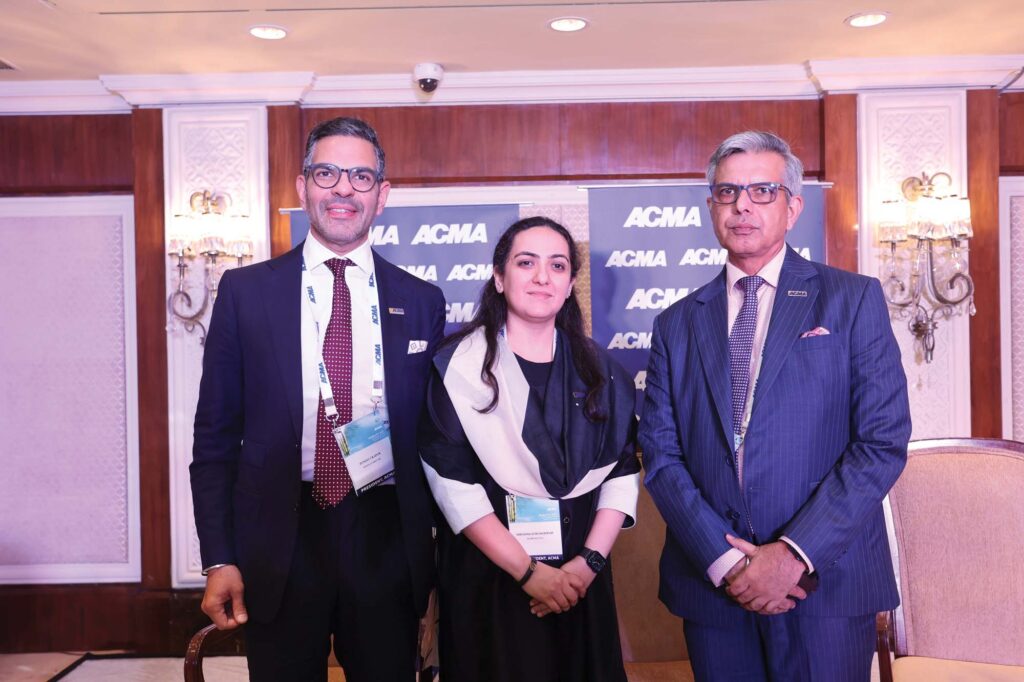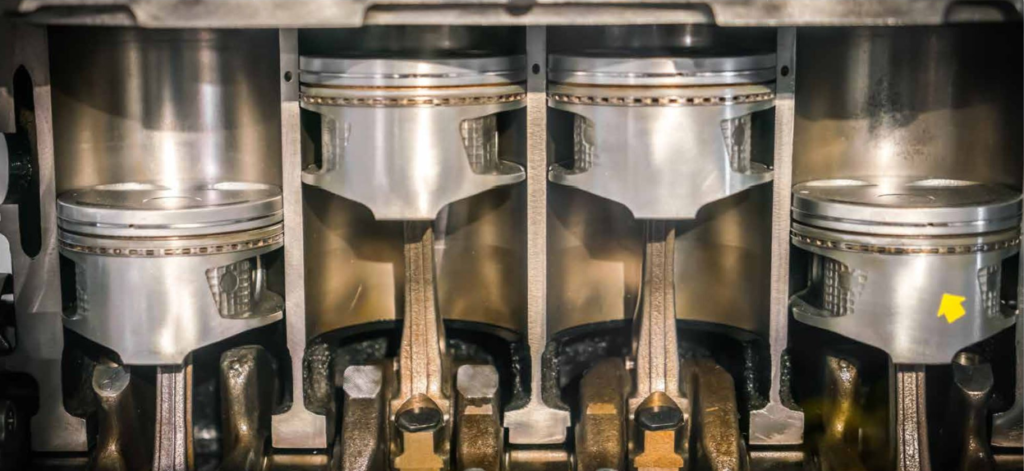In a Q&A session with the media, Sunjay Kapur, Past-President, Shradha Suri Marwah, President, Vinnie Mehta, Director General, ACMA, shared key insights on the industry’s response to rapid changes, sustainability, competitiveness, and emerging technologies. The leaders emphasized the importance of sustainability in adapting to changing landscapes, with a focus on electrification and green hydrogen. They also discussed India’s potential to compete with China, the role of semiconductor chip manufacturing, and the challenges and opportunities in achieving a $100 billion export target. The leaders highlighted the industry’s proactive approach to address right-to-repair issues, embrace digitalization and Industry 4.0, and contribute to India’s aspiration of becoming a global manufacturing hub. The Q&A shed light on the industry’s dynamic strategies for navigating a future marked by innovation, transformation, and global competitiveness. Rajesh Rajgor reports.

Is there a dilemma when we talk about adapting to changes while also emphasizing sustainability with competitiveness? What does this mean, and how do you plan to focus when there’s so much change happening?
Sunjay Kapur: Absolutely, there is no dilemma. When we discuss adapting to changes while emphasizing sustainability and competitiveness, it’s important to look at it through a sustainability lens. For instance, in the context of clean energy and electrification, the conversation is often centered around the goal of electrification. However, the key here is making this transition in a sustainable way. We’re witnessing significant investments in green hydrogen and other sustainable energy sources, which are indicative of a rapidly changing landscape. These changes won’t happen overnight, but small steps will eventually lead to substantial transformation.
What is the role of traditional internal combustion engines (ICE) in this changing landscape?
Sunjay Kapur: Traditional internal combustion engines (ICE) still have a role to play, particularly in certain sectors like commercial vehicles. While electrification is gaining ground, ICE will remain essential for a while. However, the nature of ICE vehicles is evolving too, with a growing emphasis on software components. As technology advances, we can expect a shift in the balance between ICE components and software in vehicles. It ultimately depends on the specific market and vehicle type, but both ICE and software will continue to coexist.

How do you see the competition between India and China in the automotive component industry?
Shradha Suri Marwah: India and China both have significant opportunities in the automotive component industry. Both countries are price-sensitive markets, and while China has a more extensive automotive ecosystem, India is rapidly evolving. India’s automotive sector has a bright future due to its large market, and there are opportunities for India to compete effectively. The changing global landscape, especially the concept of ‘China plus one,’ presents opportunities for India to attract investments and become a competitive player in the global automotive supply chain.
What role does India play in semiconductor chip manufacturing, given the global chip shortage?
Vinnie Mehta: India’s role in semiconductor chip manufacturing is evolving. During the pandemic, India accounted for around 7% of global semiconductor chip consumption in the automotive industry. This share has been increasing, but the industry is still relatively small compared to global leaders. The chip industry is expected to grow significantly in India, with the potential for manufacturing and supply chain opportunities. While the chip shortage issue may stabilize in the long run, the demand for chips in various applications will continue to rise, creating opportunities for India in chip manufacturing.
How is the automotive component industry addressing the challenge of ‘right to repair’ and aftermarket issues?
Sunjay Kapur: The automotive component industry is actively addressing the challenge of right to repair and aftermarket issues. The Department of Consumer Affairs has initiated the ‘right to repair’ concept, which is favorable for the aftermarket. ACMA has joined the Global Alliance for right to repair, which aims to promote the evolution of the aftermarket. Additionally, ACMA is working on standards to ensure that non-standard players are weeded out of the aftermarket. ACMA is also conducting a study to identify key markets and products for aftermarket exports, further supporting the growth of this segment.
How is India planning to achieve its target of $100 billion in exports in the automotive component industry, and what challenges and opportunities lie ahead?
Sunjay Kapur: Achieving the target of $100 billion in exports for the automotive component industry in India is a significant endeavor. The industry has been growing steadily, and initiatives like the Production-Linked Incentive (PLI) scheme are expected to boost exports. The challenges include global competition, supply chain disruptions, and regulatory changes. However, opportunities lie in enhancing manufacturing capacities, deepening trade agreements, and expanding into emerging markets. India’s cost-effective and skilled workforce, coupled with the government’s support, position it well to achieve this ambitious target.
What are the opportunities and challenges in the Indian automotive component industry related to green hydrogen technology?
Sunjay Kapur: Green hydrogen technology offers promising opportunities for the Indian automotive component industry. India’s investments in green hydrogen and sustainable energy sources are indicative of the potential in this sector. However, the challenges include the high cost of hydrogen production, infrastructure development, and scaling up production. As the technology evolves, there will be opportunities for component manufacturers to supply parts for hydrogen-based vehicles and infrastructure, but it’s a complex and evolving landscape that will require strategic planning and investment.
How is the Indian automotive component industry addressing the changing landscape of electric vehicles (EVs) and the shift away from traditional ICE vehicles?
Vinnie Mehta: The Indian automotive component industry is actively investing in research and development to develop components specific to EVs, such as batteries, motors, and power electronics. Additionally, there’s a focus on recycling and repurposing components from traditional ICE vehicles. The industry is also looking at diversifying into other mobility solutions, such as e-mobility platforms and charging infrastructure. The key challenge is the pace of transition and the need for significant investments in new technologies, but it’s an exciting and necessary shift for the industry.
How is the automotive component industry in India embracing digitalization and Industry 4.0 practices?
Shradha Suri Marwah: The Indian automotive component industry is actively embracing digitalization and Industry 4.0 practices. Many companies have started implementing technologies like IoT, AI, and data analytics to optimize manufacturing processes and improve product quality. The adoption of digital twins, real-time monitoring, and predictive maintenance is also on the rise. The industry recognizes that digitalization is crucial for staying competitive and meeting the evolving demands of customers. ACMA is also working on creating a roadmap for digital transformation and helping companies integrate digital technologies into their operations.
How can the Indian automotive component industry contribute to India’s goal of becoming a global manufacturing hub?
Shradha Suri Marwah: The Indian automotive component industry can contribute significantly to India’s goal of becoming a global manufacturing hub by focusing on several key areas. These include:
- Quality and Innovation: Continuously improving product quality and innovating in terms of design, materials, and technology to meet global standards.
- Cost Competitiveness: Maintaining cost competitiveness through efficient manufacturing processes and economies of scale.
- Skilled Workforce: Investing in workforce development and training to ensure a skilled and adaptable workforce capable of meeting global manufacturing demands.
- Global Outreach: Actively participating in global supply chains and exploring export opportunities in emerging markets.
- Sustainability: Embracing sustainable manufacturing practices and meeting environmental regulations to appeal to global customers.
- Digitalization: Implementing Industry 4.0 practices to improve productivity, reduce costs, and enhance product quality.
- Collaboration: Collaborating with OEMs and other industry stakeholders to drive innovation and meet global demands.
By focusing on these areas and continuously improving, the Indian automotive component industry can play a pivotal role in India’s journey toward becoming a global manufacturing hub.